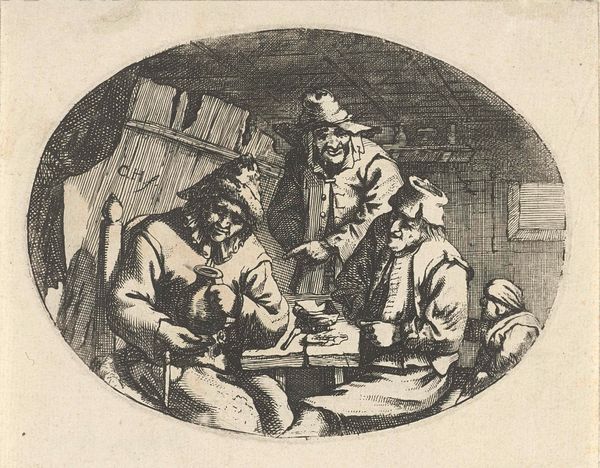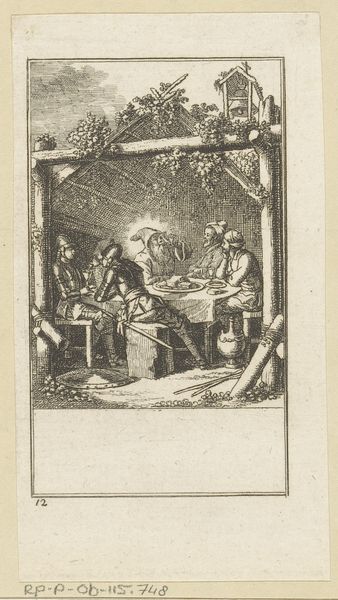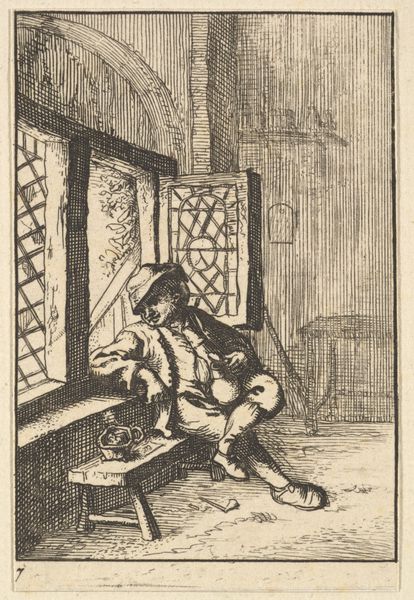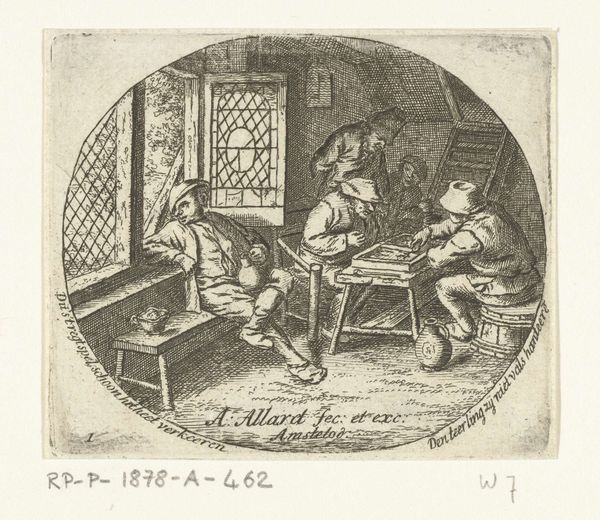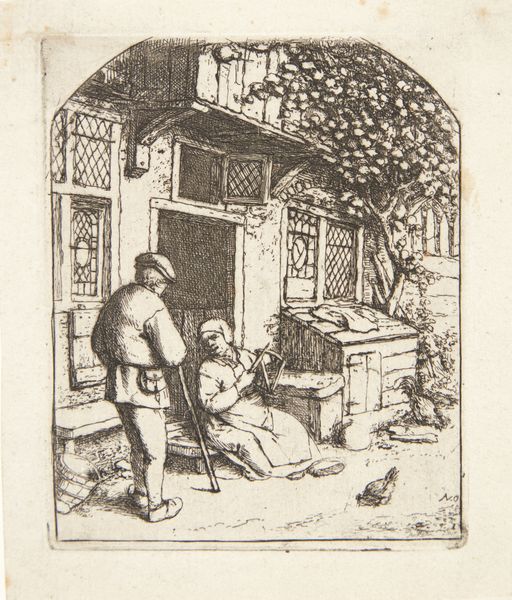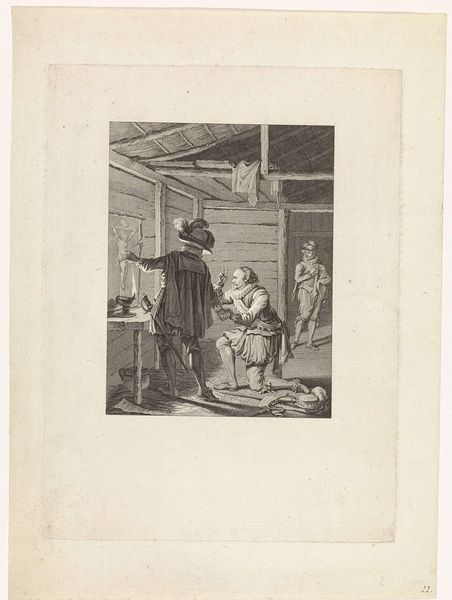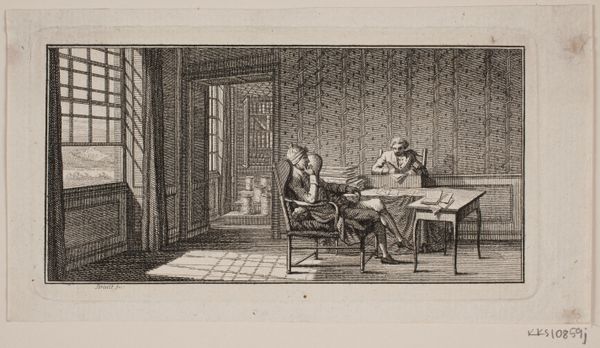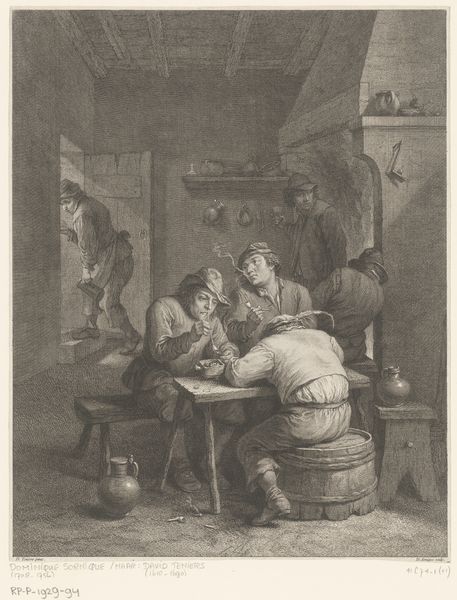
drawing, print, engraving
#
drawing
#
dutch-golden-age
# print
#
genre-painting
#
engraving
#
realism
Dimensions: Sheet: 3 9/16 × 2 3/4 in. (9 × 7 cm)
Copyright: Public Domain
Curator: Here we have Adriaen van Ostade's "Tric Trac Players," likely created sometime between 1610 and 1685. It’s an engraving, a print, offering us a small slice of 17th-century Dutch life. What strikes you about it? Editor: There’s a wonderful intimacy. It feels like sneaking a peek into a private world. The light and shadow create such a warm, almost hushed atmosphere, like the clatter of the game is softened by the haze of a sleepy afternoon. Curator: Indeed, Ostade excels at capturing everyday scenes. He’s often celebrated for his realism, showing us life as it was. Genre paintings like this were increasingly popular during the Dutch Golden Age, catering to a burgeoning middle class interested in depictions of their own lives. Editor: You can almost hear the quiet concentration and the casual camaraderie. What’s so captivating is the range of emotions within this contained space – from the introspective solitude of the figure by the window, gazing out as though pondering life's mysteries, to the intense focus of the tric-trac players. There is so much storytelling here, it bursts from such simple means. Curator: It is striking how the architecture frames the action, making us as viewers feel somehow both included and excluded at the same time. Think, too, about what’s missing, or perhaps intentionally excluded. Notice how there's no indication of the larger political and economic forces at play. These works functioned as a kind of social record, but they are partial views, very selective, emphasizing instead the intimacy of domesticity and leisure. Editor: Ostade has truly bottled something essential, a reminder that human connections are often woven in these humble, ordinary moments, seemingly inconsequential yet deeply, beautifully human. Curator: Precisely. It is important to look beyond the charm and recognize that this seemingly innocuous scene participated in a much wider trend of image production at the time. It spoke to ideas about labor and leisure that helped define an emerging national identity in the Dutch Republic. Editor: It is a bit sad knowing how many layers are lost over time as the scene remains captivating nevertheless.
Comments
No comments
Be the first to comment and join the conversation on the ultimate creative platform.
